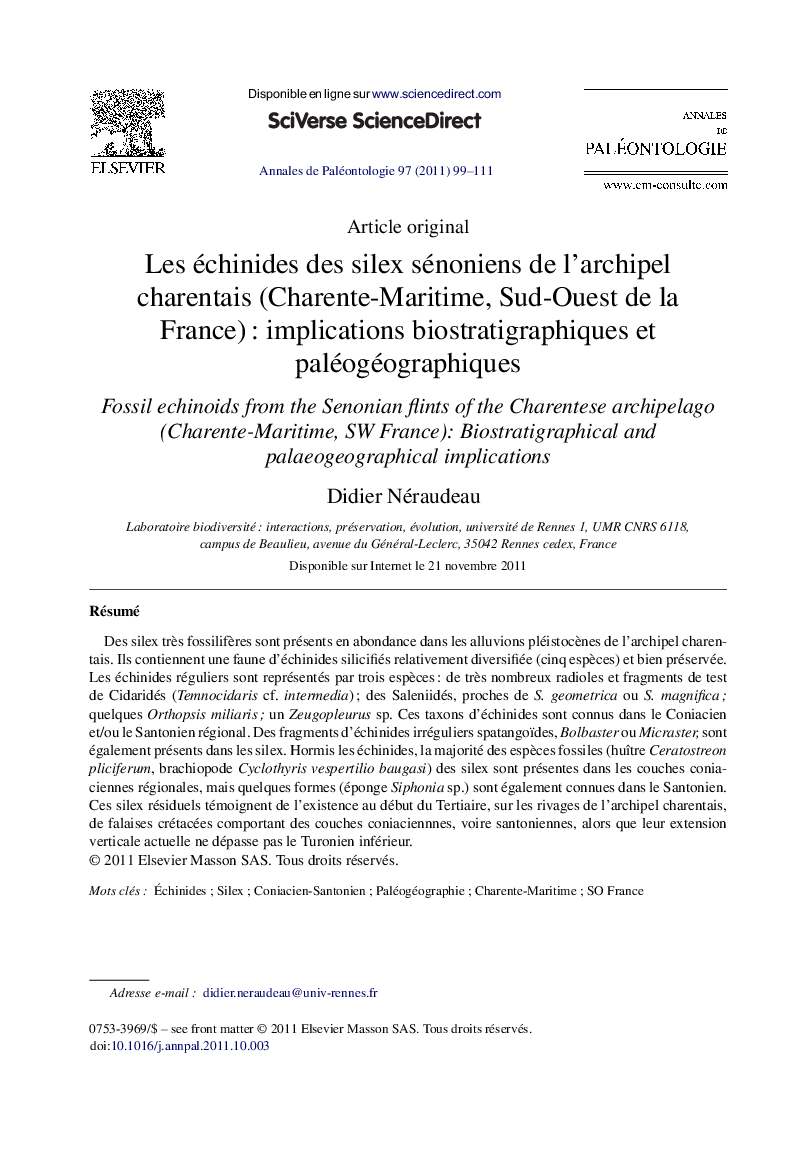| Article ID | Journal | Published Year | Pages | File Type |
|---|---|---|---|---|
| 4745423 | Annales de Paléontologie | 2011 | 13 Pages |
Abstract
Fossiliferous flints are abundant in the Pleistocene alluvial deposits of the Charentese archipelago. They contain a relatively diversified (five species) and well-preserved fauna of silicified echinoids. The regular echinoids are represented by three species: numerous spines and test fragments of Cidaroids (Temnocidaris cf. intermedia); salenoids close to S. geometrica or S. magnifica; a few Orthopsis miliaris; one Zeugopleurus sp. These echinoid taxa are regionally known in the Coniacian and/or Santonian strata. Fragments of spatangoid irregular echnoids, Bolbaster or Micraster, are also present in the flints. Except the echinoids, the main part of the fossil species of the flints (oyster Ceratostreon pliciferum, brachiopod Cyclothyris vespertilio baugasi) are present regionally in Coniacian strata, but a few ones (e. g. sponge Siphonia sp.) are known in the Santonian too. These flints testify the existence on the shore of the Charentese archipelago, at the beginning of the Cenozoic, of Cretaceous cliffs including Coniacian, and may be Santonian, strata when their present stratigraphical extension does not exceed early Turonian deposits.
Related Topics
Physical Sciences and Engineering
Earth and Planetary Sciences
Palaeontology
Authors
Didier Néraudeau,
